Share This
A disclaimer at the start of this blog: I did not spend all of my time in Beijing poking into stores and looking for whole grains. I visited wonderful sights including the Summer Palace, Yonghe Temple, Zhongshan Park, the Houhai lakes area and of course the Great Wall, during our recent trip to China.
But yeah, I really do like to check up on the whole grain scene wherever I go, and I promised you more details in my first Beijing blog. Here’s what I found once I actually hit the streets.
Grupo Bimbo is using the Whole Grain Stamp on two products, its Whole Wheat Bread and its Multigrain Bread. Jorge Zarate, General Director of Bimbo Asia, told us that the Whole Wheat Bread is the top seller of the five sliced breads the company offers in China. “Bread isn’t eaten at meals, generally,” said Zarate. “It’s eaten as a snack, plain, without any butter, jam or other spread, so the stronger taste of the whole wheat is a real plus.”
Nestlé (with General Mills, through Cereal Partners Worldwide) offers many of the same “whole grain guaranteed” cereals we’re familiar with in the United States, like the Cheerios shown here. Cold milk isn’t traditionally popular in China where (as in most Asian populations) adults are generally lactose intolerant. So RTE cereals are aimed mostly at kids; in one store we visited, in fact, the cold cereals were for sale next to the baby food, in small boxes.
Oatmeal was very visible in store after store. While cold cereal with milk has no place in Chinese culinary tradition, hot porridge has long been a breakfast staple, usually in the form of rice or millet congee, a watery porridge more akin to soup. But, while the Western cold cereals are marketed to kids, oatmeal is aimed at adults, especially those middle-aged and up. Note that the one on the left, below, says “The Middle-Aged & the Old Nutritional Oatmeal” while the package on the right is typical of the many premium gift-pack oatmeals we saw.
Kraft is selling a small cookie – in peanut or seaweed flavors – emblazoned with “Great Taste from Whole Wheat;” like the Cheerios above, this product devotes the entire back of its package to an explanation of whole grains and their benefits. We also tried a small dried-rusk sort of snack labeled “integral bread – Spain flavor” with whole wheat flour as the first ingredient. Popped grains held together with a sweet syrup are also a popular snack. The four packages below on the right feature (clockwise from upper left in right-hand photo) rice, barley & wheat, wheat, and millet. In another store we also saw amaranth, in a form similar to allegria, the Mexican treat of popped amaranth held together with honey.
Well. Whole grains are not all about snacks. We looked for whole grains in more traditional forms, too, and found these noodles in one store. No English on the package, but we’re guessing they’re buckwheat noodles, since they’re traditional in China (like soba noodles are in Japan).
We knew we’d arrived in whole grain nirvana, however, when we found this store not far from the Yonghe (Lama) Temple in Beijing. Bin after bin of every imaginable form of whole grains, along with wonderful dried beans, too.
Our shopping trips have convinced me that whole grains do indeed have a foothold in today’s China, one that can form a good foundation for increased promotion of whole grains. A big thanks to Cesar Cruz and Jorge Zarate of Grupo Bimbo, who led a group of us on a tour of Beijing supermarkets to supplement our earlier independent wanderings. (Cindy)

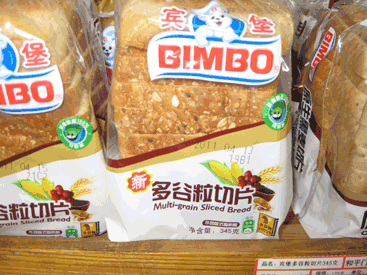
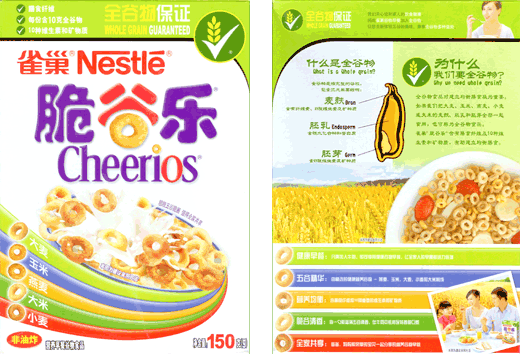
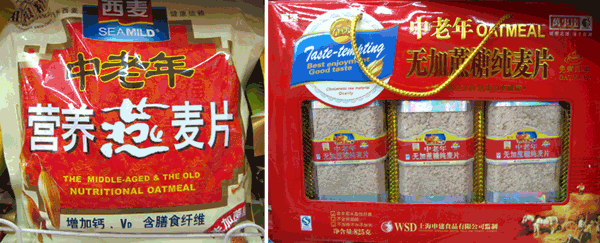
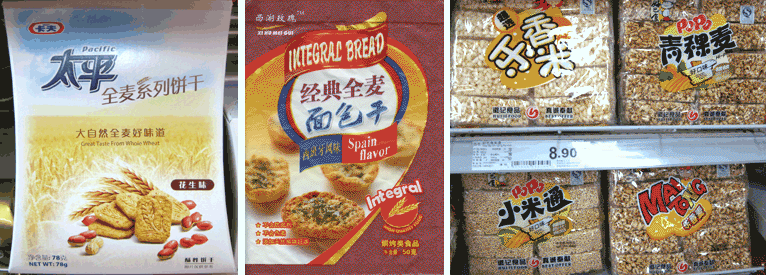
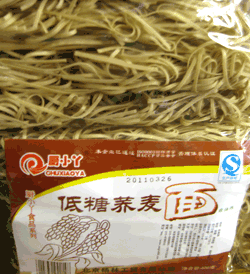
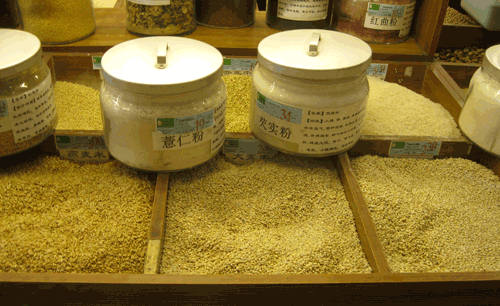
Comments
Dear Anna -- Sorry but I have not been to Beijing since 2011 so I don't have any useful information on prices or availability of grains.
Cynthia
Add a Comment